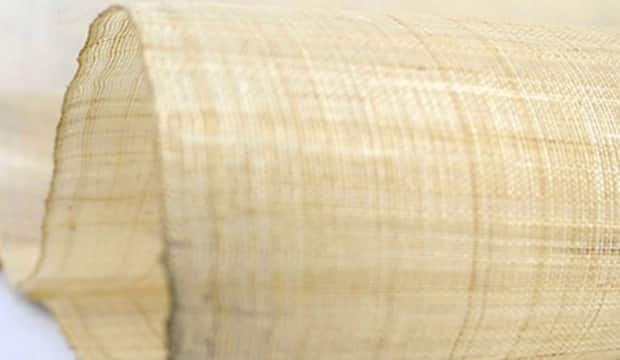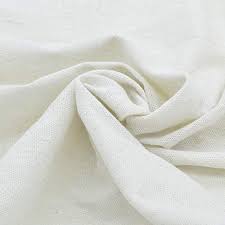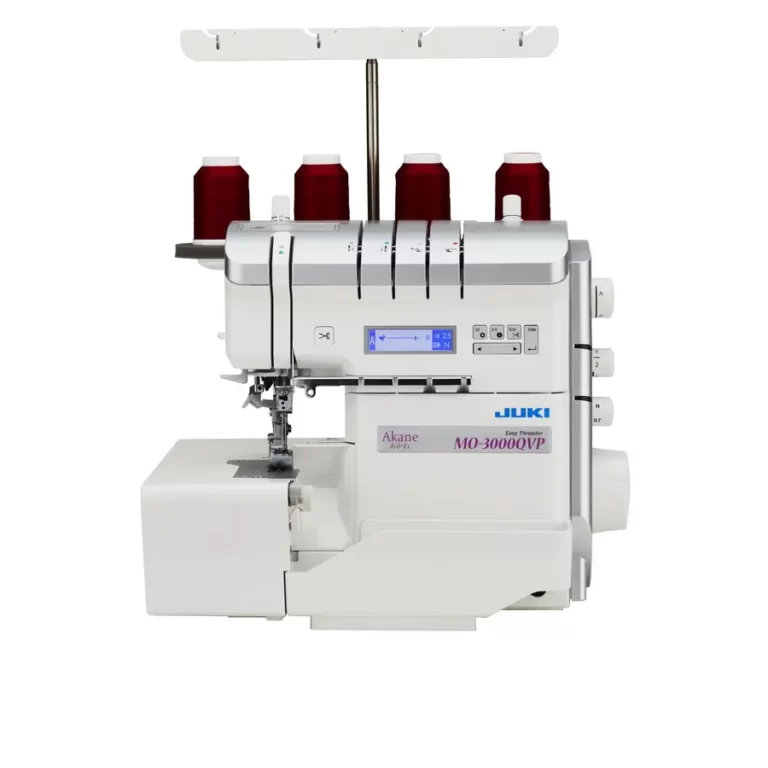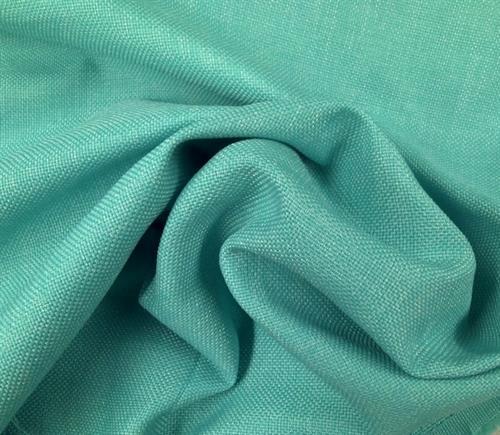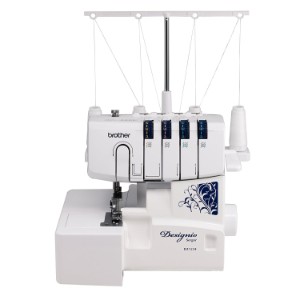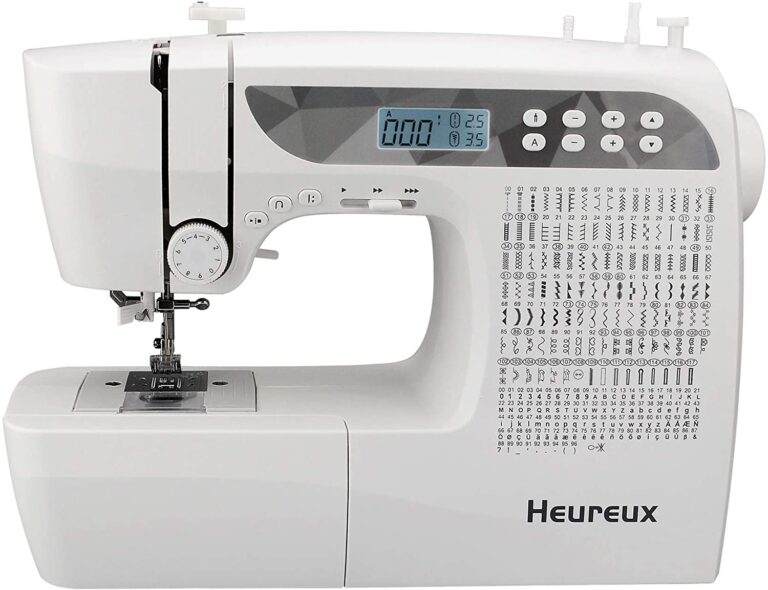Best Clothing Dye Options: Vibrant Shades That Last
Table of Contents
- 1 Top Clothing Dyes to Revamp Your Wardrobe
- 2 Buying Guide
- 3 Frequently Asked Questions
- 3.1 What are the top dyes recommended for coloring cotton shirts?
- 3.2 Which dye brands are known for their lasting effect on fabric?
- 3.3 What are the best methods for dyeing dark or black garments?
- 3.4 Which type of fabric dye works best for a cotton-polyester blend?
- 3.5 How do liquid and powder fabric dyes compare in terms of effectiveness?
- 3.6 What should you consider when choosing a fabric dye for jeans?
Top Clothing Dyes to Revamp Your Wardrobe
Whether you’re looking to refresh a faded favorite or want to experiment with a new hue, finding the right clothing dye can be crucial for your next DIY project. In the following list, you’ll discover some of the most reliable and vibrant clothing dyes available on the market.
These dyes have been selected for their ease of use, color range, and consistent results, ensuring your garments get a new lease on life with minimal hassle. Get ready to transform your wardrobe with a pop of color!
| Dye Product | Pros | Cons |
|---|---|---|
| Jacquard Acid Dye – Jet Black | – Achieves deep, vibrant color on protein-based fibers – Color remains vivid after washes – Easy to use with kitchen ingredients like vinegar |
– Not suitable for cotton or synthetics – Can be messy – Requires heat |
| Jacquard iDye Poly | – Brilliant colors for synthetic materials – Simplified process with dissolvable packet – Versatile beyond fabrics |
– High heat requirement – Not suited for natural fibers without a complementary dye – Limited color range |
| Rit Dye Black Magic | – Revitalizes clothes with rich color – Suitable for various dyeing techniques – Straightforward application |
– Inconsistency on some fabrics – Less effective on synthetics – Variance in color intensity |
| Rit Dye Charcoal Gray | – Works on a broad range of materials – Available in vibrant, easy-to-mix colors – Non-toxic and easy to work with |
– Variable results on synthetics – May need multiple bottles for large projects – Color outcome may differ from expectations |
Jacquard Acid Dye – Jet Black – Best Black Dye
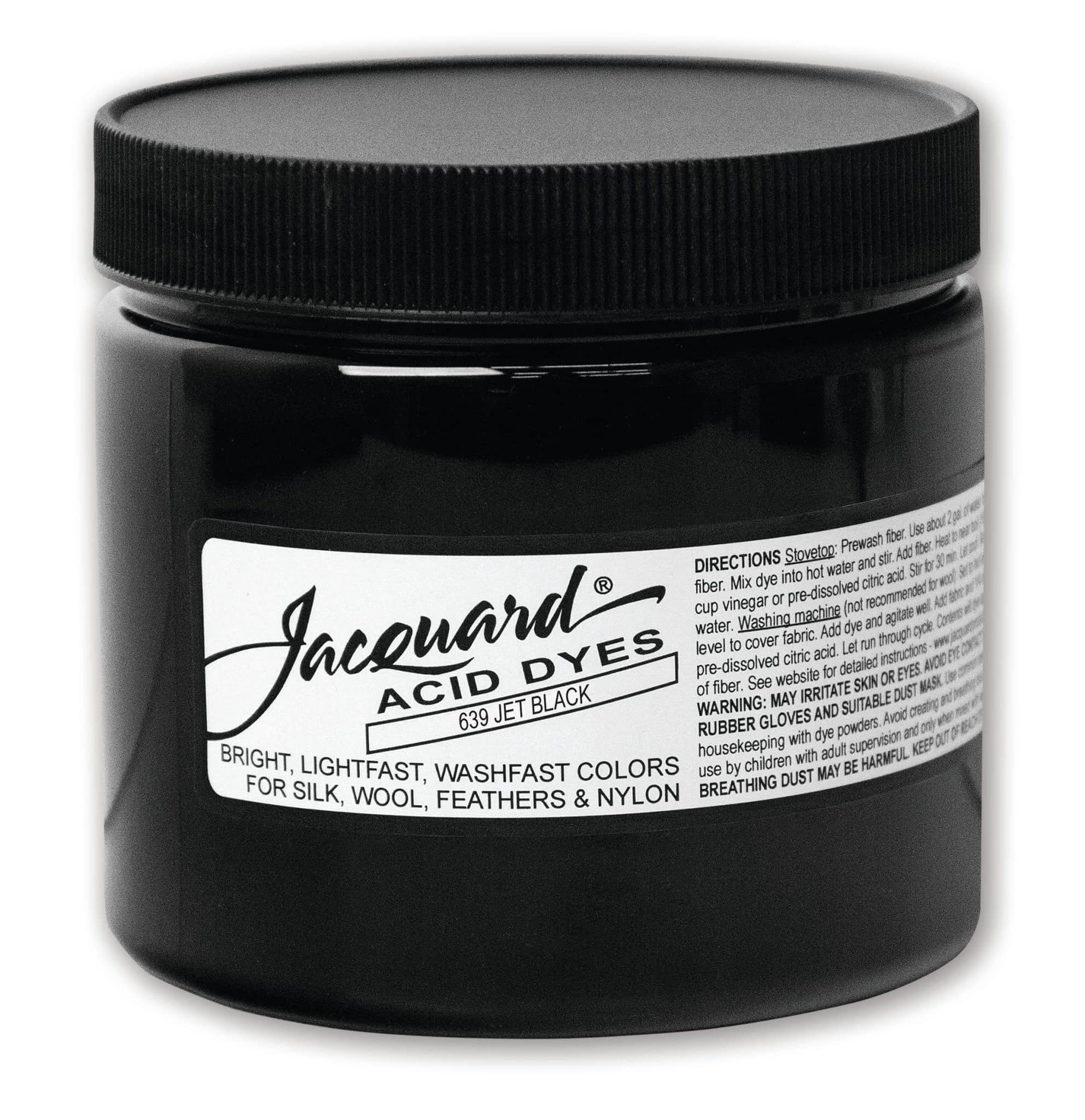
Transform your textiles into stunning works of art with the brilliant, colorfast Jacquard Acid Dye, a must-try for DIY enthusiasts and crafters alike.
Pros
- Achieves deep, vibrant color on protein-based fibers
- Color remains vivid and bright after several washes
- Easy to use with common kitchen ingredients like vinegar
Cons
- Limited to protein fibers, not suitable for cotton or synthetics
- Can be messy if not careful during application
- Requires heat, so it’s not a cold-water dye
Seeking that rich, jet black shade for your wool or silk garments? The Jacquard Acid Dye – Jet Black has you covered. The vividness of the color you obtain post-dyeing is striking, akin to finding that perfect dark sky on a clear night. Remember to get your gloves on, as this process can get a bit messy, but that’s the joy of crafting!
Heat is a crucial accomplice when working with this dye. Simply add a dash of vinegar to create the right setting for your fiber transformation show — it’s like cooking up a new wardrobe in your own kitchen! As the dye sets in, what emerges is a testament to the product’s promise of color retention; those dyed yarns or silks resist fading, even after a trip through the washing machine.
The issue of limitation on fabric types might crop up with Jacquard Acid Dye. If you’re aiming to revamp a cotton tee or a synthetic blend, you’ll have to seek an alternative. For protein-rich fibers, however, working with this dye feels rather empowering — it’s as if you’ve just unlocked a treasure chest of lasting colors.
Jacquard iDye Poly – Best Color Choice for Polyester

If you’re after a vibrant transformation for your synthetic fabrics or unique poly-blended creations, this dye might be your new go-to fixative.
Pros
- Colors synthetic materials brilliantly.
- Simplified dyeing process with dissolvable packet.
- Broadens creative horizons beyond fabrics to include plastics and more.
Cons
- High heat requirement might not suit all materials.
- Not suited for natural fibers without a complementary dye.
- Limited hues can affect color-matching for projects.
Just yesterday, I refreshed an old polyester dress with Jacquard iDye Poly and the verdant hue it now flaunts is truly rich. After heating a pot of water, the simplicity of tossing in the dissolvable dye packet had the dress soaking up color in no time. The transformation was like watching a chameleon change in slow motion; what was once a faded garment emerged as bright and lively apparel.
The versatility of this dye was impressive. A friend used it on a 3D-printed model, turning it from plain white plastic to an eye-catching emerald.This dye can uniformly coat the intricately printed layers, which speaks to the dye’s adaptability and effectiveness on various synthetic surfaces.
However, while I marveled at the lush color of my newly dyed fabric, I did consider that the heat requirement could be detrimental to more delicate items. My other gripe is about the range of colors. If you’re trying to match a specific shade, you might have to mix dyes to get the right tint, which can be a bit of trial and error.
All in all, for those eyeing an upgrade or a creative twist for their synthetics, Jacquard iDye Poly provides an opportunity to inject some personality into your items. Just make sure your material can withstand the heat, and you’re ready to cook up some dazzling hues.
Rit Dye Black Magic – Al Purpose Reliable Black Dye

Give your faded wardrobe favorites a new lease on life with this vibrant, easy-to-use dye.
Pros
- Revitalizes your clothes with rich color
- Suitable for various dyeing techniques
- Straightforward application process
Cons
- Might struggle with consistency on some fabrics
- Not as effective on synthetic materials
- Occasional variance in color intensity
Transforming that tired shirt into something showroom fresh can be incredibly satisfying. Few things beat the feeling that rushes in when you see your old garments bathed in a new, vibrant shade, which practically reaches out with renewed energy. Craft County’s Rit Dye is a powerful ally in this creative process. Its straightforward application means you don’t need to be a DIY guru to achieve the look you’re going for.
Of course, the adventure doesn’t end at the dye bath. The true reward is pulling your newly colored fabric from the mix, rinsing out the excess dye, and watching the water run clear, knowing that you’ve just taken the ordinary to extraordinary with a few simple steps. Just imagine the transformation: the once dull fabrics spring to life again; it’s almost like adding a new wardrobe piece without the shopping hassle.
Yet, these moments of creation aren’t without their hiccups. Ensuring consistent hues across various fabrics can be a bit of a dance, especially if you’re working with mixed materials which might not take the dye evenly. And while many will find the color truly dazzling, some may note that it doesn’t always come out as vivid as expected. In truth, the fun lies in the experimentation—every dyeing session is its unique experience, a small adventure in your laundry room.
Revitalize your faded wardrobe or give a fresh look to your home décor with Rit’s all-purpose liquid dye—simple to use with results that may surprise you.
Pros
- Impresses with its versatility, coloring a multitude of materials beyond fabric
- Easy application can bring older clothes back to life with rich color
- A plethora of color recipes available makes matching your desired shade a breeze
Cons
- Not suitable for fabrics with 35% or more synthetic fibers
- May produce uneven results if not used correctly
- Requires a bit of a learning curve for beginners
Ever had an old pair of jeans you loved turn a shade too light? With Rit Liquid Fabric Dye, you’re just a dye bath away from breathing new life into them. I recently gave this dye a try on some linen curtains, and they turned out as beautifully vibrant as I’d hoped. It’s a game-changer for home DIY-ers or anyone looking to add a personal touch to their fabric items.
Guidance from Rit’s website is a godsend for dye novices. Their step-by-step advice helped me avoid common pitfalls and achieve an even color distribution. What’s more, my faded throw pillows now look brand spanking new. This dye has become a staple in my DIY arsenal, it’s that reliable.
Compatibility is key; this dye is a wizard on natural fibers but loses its magic with high percentages of synthetic material. Stick to the rules, and you should see consistent results. Remember, if you do need to work with synthetics, Rit offers a separate formulation for that purpose—evidence of their understanding of diverse fabric needs.
So if you’re eyeing that bland fabric and feeling creative, give Rit Liquid Fabric Dye a whirl. Keep in mind, though, it’s not quite a ‘one size fits all’ solution, so make sure your fabric is compatible. Happy dyeing!
Rit Dye Charcoal Gray

If you’re aiming for a color refresh or a complete transformation, this dye is your new go-to.
Pros
- Encompasses a broad range of materials
- Available in vibrant, easy-to-mix colors
- Non-toxic and easy to work with
Cons
- Results may vary on synthetic fabrics
- Might require multiple bottles for large projects
- Color outcome can be different than expected
Craft County’s Charcoal Gray Rit Dye is like a magic potion for worn or dull fabrics. Its versatility had me experimenting with an old pair of jeans, which turned out surprisingly fresh and modern with a deeper shade that gave them new life. The liquid formula was a breeze to mix, adhering to the cotton with ease.
Your favorite wood or wicker items can also get a facelift with this dye. I revived a tired-looking basket and it now holds pride of place on my kitchen table with its rich, even color tone.
Occasionally, however, the dye might not adhere as vibrantly on synthetic blends, which I learned when tackling a rayon-mix shirt. Even then, the subtler hue was pleasing, if not what was initially intended. Remember, with dyes, sometimes the canvas determines the art.
Buying Guide
Type of Dye
The type of fabric you’re working with is crucial. Natural fibers like cotton, linen, and silk take dye differently than synthetic fibers such as polyester and nylon.
- Natural Fibers: Fiber-reactive dyes are best for long-lasting color.
- Synthetic Fibers: Look for dyes specifically formulated for synthetics.
Colorfastness
You want your color to last, so check for dyes that promise colorfastness, which means the color won’t wash out or bleed easily.
Safety and Environmental Impact
Consider eco-friendly dyes that are non-toxic and safe for the environment. Check for labels like “low-impact” or “non-toxic”.
Ease of Use
| Dye Type | Usability | Suitable For |
|---|---|---|
| Powder | Moderate | Bulk dyeing |
| Liquid | Easy | Small projects, detail |
Additional Features
Keep an eye out for:
- Solubility: Dyes that dissolve well tend to give a more even color.
- Requirement for Fixatives: Some dyes need a fixative or after-treatment to set the color properly.
Technique and Application
- Immersion Dyeing: For even, all-over color.
- Paint-on Techniques: For highlights or detailed work.
Remember, always follow the instructions provided with the dye to ensure the best results. Happy dyeing!
Frequently Asked Questions
Dyeing your own clothes can give them a fresh, vibrant look. Whether you’re rejuvenating an old cotton shirt or customizing a pair of jeans, choosing the right dye is crucial for achieving the best result. In this section, we’ll cover some common questions to guide you in finding the ideal dye for your fabric projects.
What are the top dyes recommended for coloring cotton shirts?
Rit Dye and Dylon Permanent Fabric Dye are popular choices for cotton shirts. They provide a wide range of colors and are easy to use, often requiring just a simple washing machine cycle or a quick hand-dye process.
Which dye brands are known for their lasting effect on fabric?
Jacquard Procion MX and Fiber Reactive Dyes are known for their long-lasting color on fabrics. Their molecular bonding with fibers ensures the dye remains vibrant even after multiple washes.
What are the best methods for dyeing dark or black garments?
To successfully dye dark or black garments, it’s often best to use a dye remover first, followed by a high-quality fabric dye. Using a stovetop method with a dye like Rit DyeMore, which is specifically designed for synthetic fabrics, can yield good results on darker clothes.
Which type of fabric dye works best for a cotton-polyester blend?
For blends like cotton-polyester, you’ll want a dye that works effectively on both types of fibers. Rit’s All-Purpose Dye, for example, can color cotton fibers, while Rit DyeMore is suitable for the synthetic elements in the blend. Sometimes using a combination of these dyes is the best approach.
How do liquid and powder fabric dyes compare in terms of effectiveness?
Liquid dyes are generally more user-friendly, since they dissolve easily and offer consistency in color. Powder dyes, however, can be more economical and allow for more control over the intensity of the color by adjusting the amount of dye used. Both can be equally effective when used properly.
What should you consider when choosing a fabric dye for jeans?
When dyeing jeans, especially if they’re made of denim, look for dyes that are specifically formulated for heavy fabrics. The dye should be able to penetrate the dense weave of denim. Fiber Reactive Dyes or Rit’s Denim Blue are excellent options for maintaining the durability and appearance of jeans through repeated washing.


